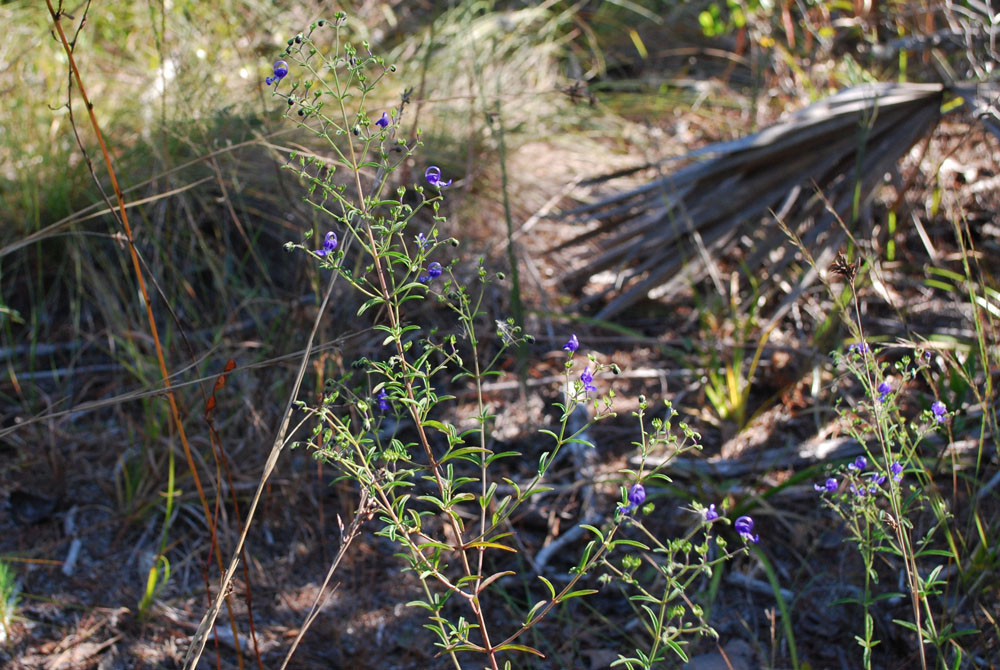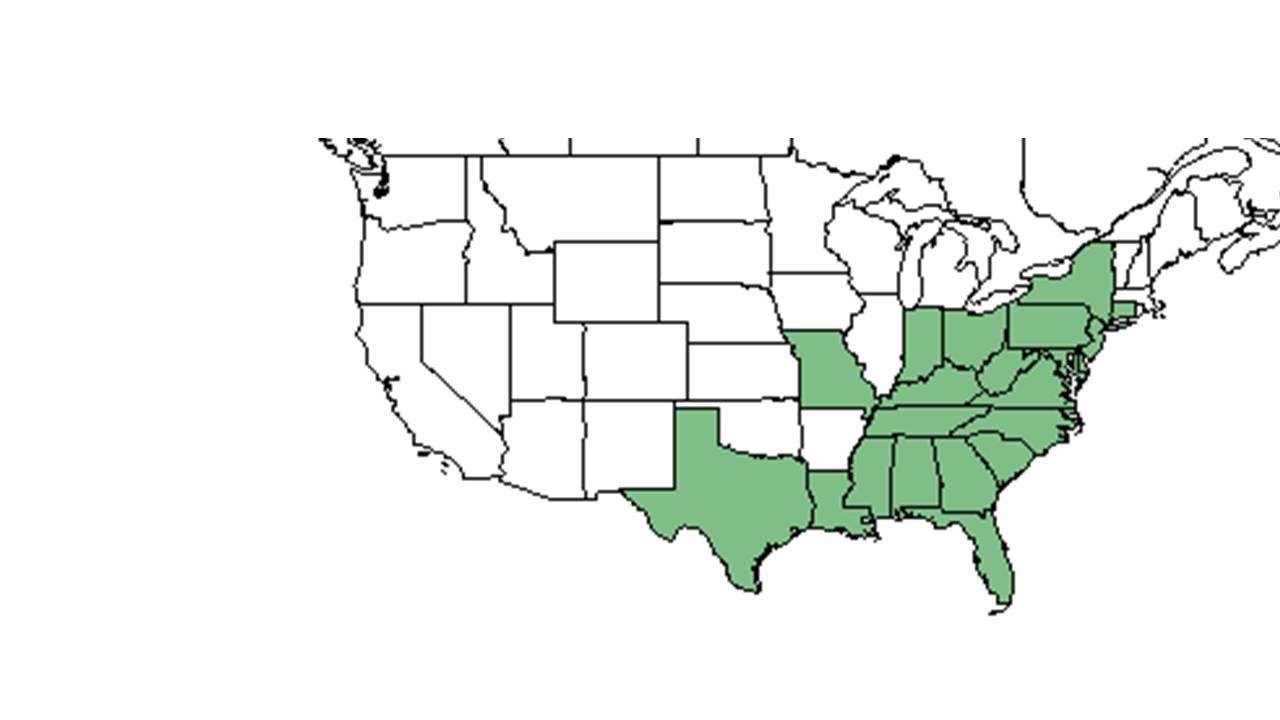Trichostema setaceum
| Trichostema setaceum | |
|---|---|

| |
| Photo by Wayne Matchett, SpaceCoastWildflowers.com | |
| Scientific classification | |
| Kingdom: | Plantae |
| Division: | Magnoliophyta – Flowering plants |
| Class: | Magnoliopsida – Dicotyledons |
| Order: | Lamiales |
| Family: | Lamiaceae ⁄ Labiatae |
| Genus: | Trichostema |
| Species: | T. setaceum |
| Binomial name | |
| Trichostema setaceum Houtt. | |

| |
| Natural range of Trichostema setaceum from USDA NRCS Plants Database. | |
Common name: narrowleaf bluecurls
Contents
Taxonomic notes
Description
"Pubescent annual or weak perennial herbs from tap roots, freely branched with opposite branches. Stems obscurely angled, usually stipitate-glandular, leafy. Leaves entire or toothed, rarely lobed, petiolate to essentially sessile. Inflorescence a panicle of paired, bracteate, helicoid cymes with a flower at the axis of each pair; bracts similar to the leaves, smaller. Calyx bilabiate, lower lip longer than the upper with 3 essentially equal teeth, upper with 2 similar teeth; corolla blue to violet, zygomorphic, 5-lobed, lowest lobe lip-like, 5-10 mm long, lateral triangular-ovate, 2-4 mm long, tube short. Stamens 4, ca. 2X as long as the corolla, curved between the lateral lobes and curled downward almost meeting the lip; stigma bilobed, style curled in same fashion as stamens. Mericarps brownish to olive or blackish, dull, obovoid." - Radford et al 1964
"Stems, at least the principle ones, uniformly retrorsely short-pubescent, with trichomes 0.1-0.2 mm long. Leaves elliptic-linear, 1.5-4 cm long, 1-5 mm wide, entire, tapered to short petioles or sessile. Mericarps obscurely reticulate, 1.6-1.8 mm long." -Radford et al 1964
Distribution
Ecology
Habitat
In the Coastal Plain in Florida and Alabama, T. setaceum can be found in upland pine-hardwood forests, pinewoods, turkey oak-longleaf pine barrens, sand ridges, longleaf pine/scrub oak/wiregrass ridges, sandhill oak scrubs, and wiregrass-longleaf pine communities (FSU Herbarium). It is a ruderal species and can be found in cleared pine forests, turkey oak sand ridge clearings, and roadsides. Soil types include loamy sand and loamy soil (FSU Herbarium). Associated species include Vaccinium stamineum, Warea, Agalinis, Liatris, and Dicerandra (FSU Herbarium).
Phenology
Flowers and fruits September through November (FSU Herbarium).
Seed dispersal
Seed bank and germination
Fire ecology
Pollination
Use by animals
It seems to be a major plant food for bobwhites in October (McRae et al 1980).
Diseases and parasites
Conservation and Management
Cultivation and restoration
Photo Gallery
References and notes
Florida State University Robert K. Godfrey Herbarium database. URL: http://herbarium.bio.fsu.edu. Last accessed: July 2015. Collectors: Lisa Keppner, Ed Keppner, Loran C. Anderson, Robert K. Godfrey, L. H. Shinners, Cindi Stewart, - MacClendons, Robert L. Lazor, R. Kral, A. F. Clewell, Roy Jervis, C. Jackson, Gary R. Knight, Sidney McDaniel, Wilson Baker. States and Counties: Alabama: Baldwin. Florida: Bay, Escambia, Franklin, Gadsden, Jackson, Leon, Liberty, Santa Rosa, Wakulla and Washington. Compiled by Tall Timbers Research Station and Land Conservancy.
McRae, W. A., J. L. Landers, et al. (1980). "Importance of habitat diversity in bobwhite management." Proceedings of the Annual Conference of the Southeastern Association of Fish and Wildlife Agencies 33: 127-135.